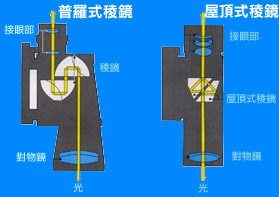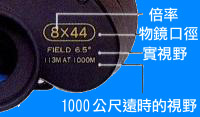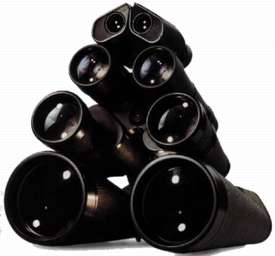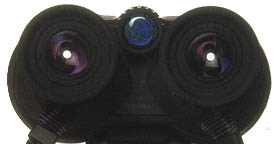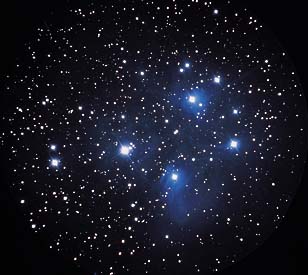| 有些人或許會覺得:看到一些天文同好們玩著大枝小枝昂貴的望遠鏡,
雙筒望遠鏡是有點玩具似的東西,其實不然,不管他有多猛的炮,每一個業餘的天文同好都應該有一枝不錯的雙筒望遠鏡,而如果你和小潔一樣是一位剛入門的同好,而預算又不是很多時,小潔倒建議你別把全部的錢一股腦投到鏡筒或赤道儀上,而應該買一枝不錯的雙筒望遠鏡和本星圖及幾本初學者的好書(更別忘了來小潔的只要天文看看) [雙筒望遠鏡的結構] 一般市面上雙筒望遠鏡的結構,可不只是兩枝折射鏡裝在一起那麼簡單哦,現在的雙筒望遠鏡主要可以由稜鏡的型式分成2種類型--屋頂式稜鏡(roof-prism)和普羅式稜鏡(porro-prism) 或許你會問:那一種比較好?只要是對雙筒望遠鏡了解的人都會告訴你:"普羅式的",沒錯,在其他條件都一樣的情況下,普羅式的稜鏡的確比屋頂式更能夠提供你較為明亮.銳利.的影像 [普羅式雙筒望遠鏡]
Porro prism binoculars |
|||||||
| [屋頂式稜鏡與普羅式稜鏡的分別] 屋頂式稜鏡,當然是長得像屋頂形狀的稜鏡(廢話!),有一層內面鍍上鋁(或其他金 屬,但通常是鋁)以反射由物鏡接收進來的光 ,而有一小部分的光便在這個時候損 失掉了,而造成了較暗的影像;相反地,品質夠好的普羅式稜鏡不需要反射的鏡面 便可以完全反射所收集到的光.而另一個屋頂式的缺點便是其高昂的價格,一部分 的原因起因於其在安裝時所需要的高精密度,就我們觀測星空而言,就算是最好. 最貴的屋頂式望遠鏡,其影像的品質仍然比不上同口徑的普羅式雙筒望遠鏡 |
|
||||||
| [你該知道關於雙筒望遠鏡的常識] [放大倍率&口徑] 所有的雙筒望遠鏡上至少都該有2個數字,像:7╳50或是11╳70等..要了解你的雙筒望遠鏡,當然要先知道這兩個數字所代表的意義 |
|||||||
|
|
|
||||||
很多人都有這種觀念:以為放大倍率愈大就表示這枝雙筒望遠鏡愈好,其實並不盡然,愈大的放大倍率雖然可讓你在望遠鏡裡看到愈 大的東西,而伴隨而來的則是較為昏暗的影像,當你想買雙筒望遠鏡時,最重要的便是考量你的用途及預算,來選擇一枝適當口徑&倍 率的雙筒 [光瞳徑(Exit
Pupil)] |
|||||||
| [鍍膜(Coating)] 如果是想要選購一雙好的雙筒,其鍍膜也是很重要的,而鏡片釨端端的為什麼要鍍膜咧?其實是為了減少光線的散失(即增加透 光率)當一片未鍍膜的鏡片在光線通過時,會因為反射而有大約4%的光線散失,而如果在鏡片的兩面都鍍上一層薄薄的氯化鎂 MgCl2 其光線的損失率就可以減少到1.5%左右,所看到的影像當然也就明亮得多,也比較不會有炫光的產生, 而適當厚度的 MgCl2 鍍膜是呈現紫色的,如果太厚看起來就是綠色,太薄看起來會有點粉紅色的,而現在各雙筒望遠鏡廠商大部分都有自己的 一套多層鍍膜法,所以妳看到的雙筒望遠鏡鏡片就會有五顏六色啦,至於各家廠商的鍍膜如何還有優劣...這就不是小潔能力所及 的地方啦。不過有一點希望大家注意,大家或許都曾經在路邊攤或廣告裡看過那些看起來很厲害的"紅寶石鍍膜"希望大家不要被 騙啦,這種紅得發亮的鍍膜只會讓影像喪失原有的色調及變暗,反而會造成反效果。 |
|||||||
